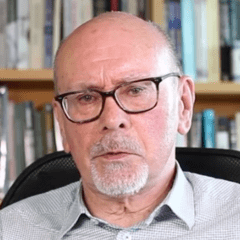You are not currently logged in. Please create an account or log in to view the full course.
Origins
- About
- Transcript
- Cite
US History – The Great Depression, 1929-33
In this course, Professor Peter Fearon (University of Leicester) explores the economic downturn and financial crisis in the United States in the period 1929-33. In the first module, we think about the origins of the economic downturn, including the Wall Street crash of October-November 1929. In the second module, we think about the key features of the economic and financial collapse, focusing in particular on the collapse of the baking sector, before turning in the third module to consider how the crisis played out for people living in farms and rural communities. Finally, in the fourth module, we think about support networks were available for those caught up in the Great Depression.
Origins
In this module, we think about the origins of the Great Depression, focusing in particular on: (i) the strength of the US economy in the 1920s, and the sources of that strength; (ii) the high profitability of the consumer durables and construction industries, and the extent to which this fed into the stock market; (iii) the attempts by the Federal Reserve to prevent speculation on the stock market, including the increase in interest rates; (iv) the unforeseen consequences of the Federal Reserve's actions: the diversion of money from overseas markets into the domestic stock exchange; (v) the extent to which different regions relied on investment from the United States, either directly (e.g. Germany) or indirectly (e.g. the UK and France, via Germany); and (vi) the reasons that the American economy began to slow down by mid-1929, and the reasons why this led to a collapse in stock prices in October of the year – the Wall Street crash.
Cite this Lecture
APA style
Fearon, P. (2021, March 19). US History – The Great Depression, 1929-33 - Origins [Video]. MASSOLIT. https://massolit.io/courses/the-great-depression-1929-33/economic-and-financial-collapse
MLA style
Fearon, P. "US History – The Great Depression, 1929-33 – Origins." MASSOLIT, uploaded by MASSOLIT, 19 Mar 2021, https://massolit.io/courses/the-great-depression-1929-33/economic-and-financial-collapse

